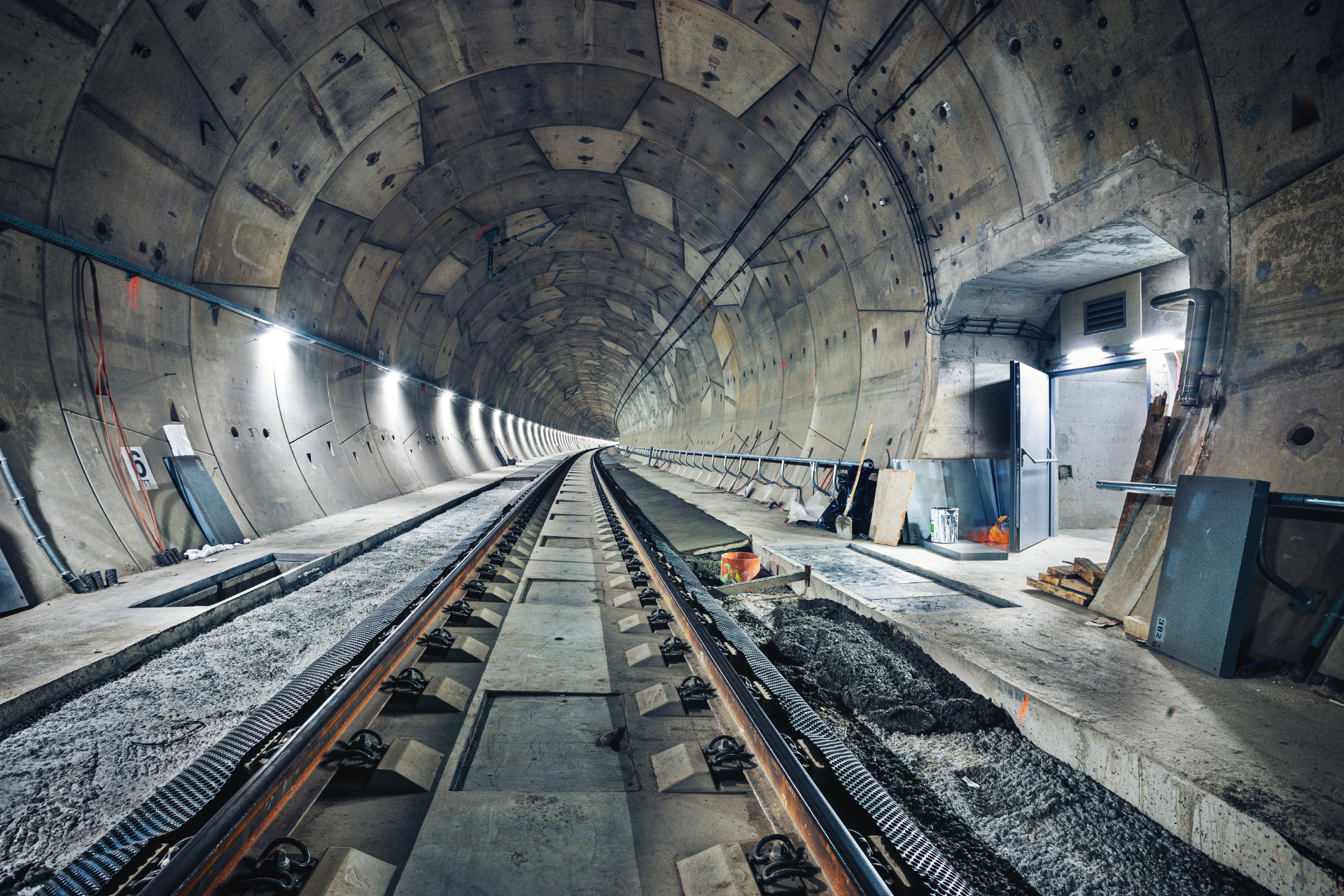
As infrastructure projects grow in scale, complexity and scrutiny, the technical deliverables, while crucial, are no longer the sole markers of success. Increasingly, industry leaders are recognising that a project's success hinges just as much on its internal culture as it does on design specifications, environmental compliance or budget control. Indeed, from the rail corridors of the North to major utilities upgrades in the South, a quiet revolution is underway: one where leadership, communication and team cohesion are becoming the differentiators between projects that flounder and those that flourish. Culture, often dismissed as intangible, is in fact deeply operational. It shapes how teams respond under pressure, how risk is communicated, and how problems are escalated or solved. On high-pressure infrastructure programmes (particularly those involving multi-tiered contractors, dispersed workforces and politically sensitive deadlines) poor culture can quietly undermine progress, leading to avoidable rework, safety lapses or project drift. In contrast, strong cultures create alignment across disciplines, encourage professional pride, and empower teams to anticipate challenges rather than merely react to them. Leadership plays a critical role in fostering such cultures, yet effective leadership in this context demands more than technical competence or hierarchical authority. It requires emotional intelligence, clarity of purpose, and a collaborative mindset that bridges the divide between frontline delivery and strategic oversight. When leaders take the time to be visible, to listen deeply, and to model behaviours such as accountability and openness, they set a tone that ripples throughout the supply chain. This is especially important on long-duration projects where team turnover is inevitable; a resilient culture ensures continuity even as individuals change. Moreover, in an environment marked by increasing regulatory scrutiny and public expectations, trust (internally and externally) has never been more valuable. Teams that feel heard, supported and fairly treated are more likely to escalate issues early, report near-misses, and remain committed during periods of disruption or change. For clients and contractors alike, investing in leadership development, team-building, and structured feedback loops is not an indulgence; it is a safeguard against stagnation, fragmentation, and costly reputational damage. The infrastructure sector is often measured by its outputs, kilometres of track laid, substations connected, carbon savings achieved. But in the years ahead, it will also be measured by its ability to nurture workforces that are skilled, motivated, and able to collaborate across boundaries. If the goal is not simply to build but to build better, then culture and leadership must move from the periphery of project planning to its core. At Deploy, we understand that infrastructure excellence relies not just on technical capability, but on the strength, resilience, and alignment of the people behind it. That’s why we partner with organisations across rail, utilities, and engineering to provide not only talent, but tailored recruitment solutions that help foster high-performing teams. Whether you’re scaling up for a complex project or strengthening your leadership pipeline, our specialist consultants are here to support your long-term success. Get in touch to explore how Deploy can help you build the workforce to match your ambition.
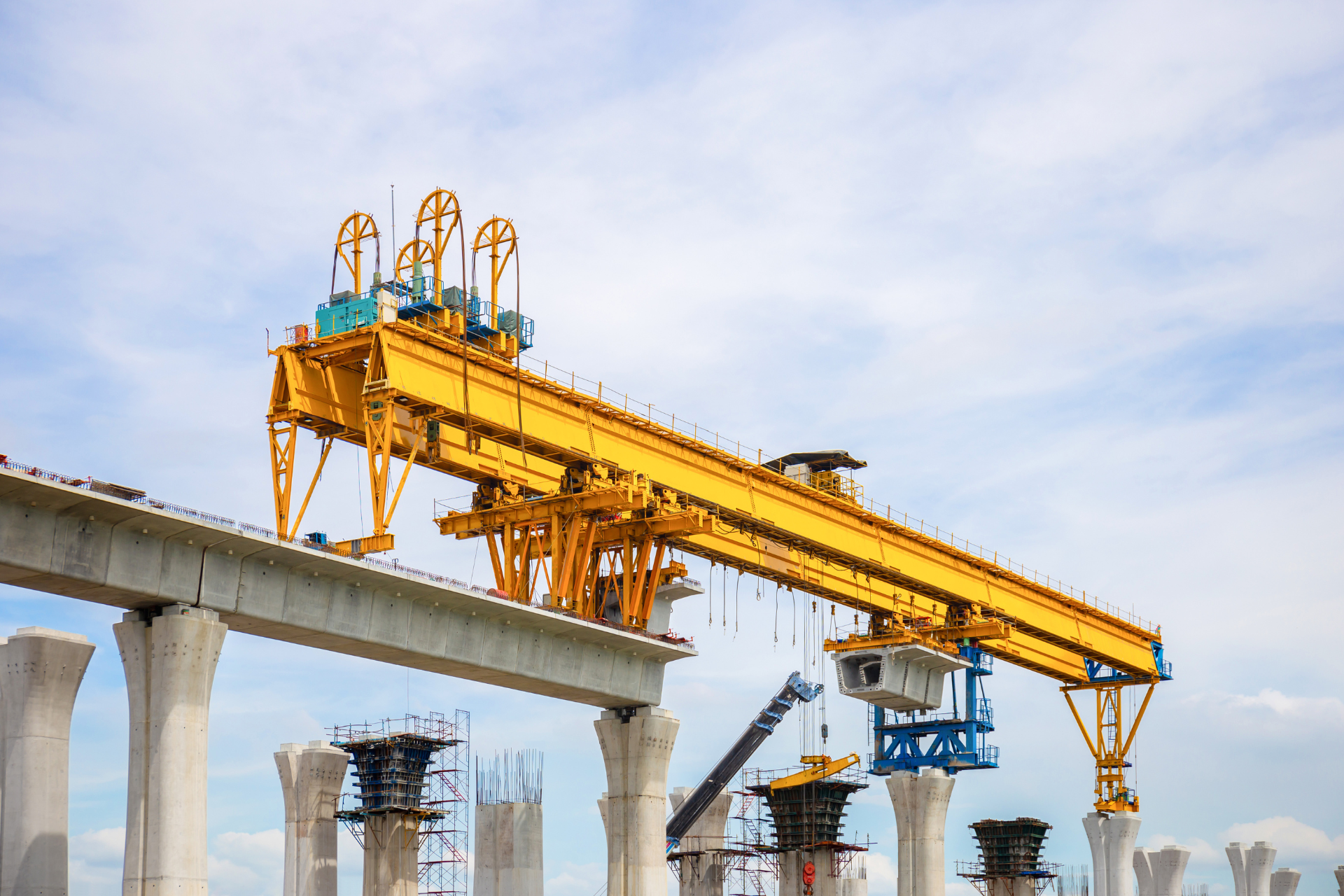
Rail infrastructure projects are among the most complex and capital-intensive undertakings in the modern world, requiring vast financial investment, meticulous planning, and the coordination of numerous stakeholders. Yet, despite extensive feasibility studies and carefully projected budgets, large-scale rail projects frequently exceed their original financial estimates, often by billions of pounds. Understanding the reasons behind these budget overruns is crucial for governments, private investors, and industry professionals seeking to improve efficiency, enhance cost control, and deliver rail networks that are both financially and operationally sustainable. One of the most significant factors contributing to cost overruns in rail infrastructure is the sheer complexity of large-scale projects, which must account for engineering challenges, unforeseen environmental conditions, and regulatory requirements that may evolve over time. Many projects require the construction of tunnels, bridges, and viaducts, each of which presents unique geotechnical difficulties that can lead to delays and increased costs. In urban environments, for example, excavation work often uncovers archaeological remains, hazardous materials, or unstable ground conditions that were not fully accounted for during initial surveys, forcing project teams to revise their strategies and allocate additional funding. Furthermore, when infrastructure projects require coordination between multiple jurisdictions, lengthy approval processes and changing government policies can add layers of bureaucracy that further escalate costs. Another critical issue is the underestimation of material and labour expenses at the outset of a project, which can lead to budget shortfalls as work progresses. While initial cost estimates are based on projected prices for steel, concrete, and other raw materials, fluctuating global markets can cause significant price increases, especially during periods of economic uncertainty or supply chain disruptions. Additionally, the skilled workforce required for rail infrastructure development is often in high demand, meaning that wages and contractor fees can rise beyond initial projections. In some cases, prolonged delays due to labour shortages, strikes, or contractual disputes further exacerbate financial pressures, leading to cost increases that were not originally anticipated. Beyond material and labour expenses, another major contributor to budget overruns is the frequent scope expansion that occurs during the development of rail infrastructure. Governments and transport authorities often revise project specifications to accommodate growing passenger demand, integrate new technologies, or enhance sustainability measures. While such adaptations may improve the long-term viability and functionality of a railway, they also add significant costs that were not part of the original financial framework. The integration of advanced signalling systems, electrification upgrades, or additional station infrastructure, for example, can require significant redesigns that increase both the timeline and overall expenditure of a project. Risk management and contingency planning also play a crucial role in determining whether a project remains within budget, yet these elements are often insufficiently accounted for in the early planning stages. While many rail projects include built-in contingencies to absorb unforeseen costs, these buffers are sometimes inadequate in the face of escalating challenges. Cost estimates may be based on overly optimistic assumptions, with some stakeholders eager to present politically or commercially attractive figures to secure funding and public support. When the actual cost of delivery exceeds these initial estimates, governments and investors are left facing difficult decisions, including whether to inject additional funding, scale back project scope, or in some cases, delay or cancel portions of the development. In addition to financial and logistical factors, public and political pressures can also contribute to cost escalations in rail projects. Large-scale infrastructure developments often attract intense scrutiny from the media, the public, and opposition parties, leading to calls for additional environmental impact assessments, community consultations, and safety reviews. While such processes are essential for ensuring responsible and transparent development, they can extend project timelines and necessitate further spending to address newly raised concerns. Political changes, such as shifts in government leadership or policy priorities, may also result in the introduction of new regulations or funding reallocations that further complicate financial planning. Addressing the issue of cost overruns in rail infrastructure requires a multi-faceted approach that prioritises realistic budgeting, comprehensive risk assessment, and adaptive project management. Governments and private stakeholders must invest in thorough preliminary studies, employ cutting-edge predictive modelling tools, and ensure that contingencies are robust enough to withstand unexpected challenges. Additionally, fostering greater transparency in budget forecasting, improving contract structures, and adopting more agile procurement processes can help mitigate the risk of spiralling costs. By learning from past projects and embracing innovative construction methods, the rail industry can work towards delivering infrastructure that is not only sustainable and efficient but also financially viable in the long term. While cost overruns in rail infrastructure projects may never be entirely eliminated due to the inherent uncertainties of large-scale development, a more proactive and informed approach to financial management can help ensure that projects are completed within reasonable budgetary constraints. As demand for rail transport continues to rise globally, the ability to deliver high-quality infrastructure without excessive financial burdens will remain a defining factor in shaping the future of sustainable and accessible railway networks. At Deploy, we understand that delivering large-scale rail infrastructure requires not only technical expertise and financial oversight but also a highly skilled and adaptable workforce. As specialists in rail and infrastructure recruitment, we connect businesses with the right talent to navigate complex projects, ensuring efficiency, safety, and compliance at every stage. Whether you need experienced engineers, project managers, or specialist rail professionals, our tailored recruitment solutions help you build a workforce that can meet the demands of today’s rail industry. Get in touch with Deploy to find out how we can support your next project.

As global supply chains become increasingly complex and sustainability takes centre stage in transport and logistics, the freight rail industry is undergoing a profound technological transformation The integration of automation, artificial intelligence (AI), and digital advancements is reshaping operations, enhancing efficiency, reducing emissions, and strengthening resilience against future disruptions. These innovations are not only safeguarding the long-term viability of freight rail but also positioning it as a fundamental pillar in the transition towards greener and more intelligent logistics networks. The Rise of Automation in Freight Rail Automation is revolutionising freight rail by streamlining operations, improving reliability, and significantly lowering costs. In recent years, the development of autonomous train operations has gained momentum, with several countries trialling and implementing driverless and semi-autonomous freight trains. By leveraging sophisticated control systems and real-time data analytics, these automated trains enhance scheduling precision while simultaneously reducing human error. Australia, for example, has pioneered this approach with the Rio Tinto AutoHaul project, which is widely recognised as the world’s first fully autonomous heavy-haul railway, successfully transporting vast quantities of iron ore across the Pilbara region. Beyond train operations, automation is also transforming freight terminals and yards, where robotics and AI-driven software are optimising the loading, unloading, and handling of cargo. Automated cranes, intelligent sensors, and advanced logistics algorithms are reducing dwell times and improving intermodal connectivity by ensuring that freight moves seamlessly between rail, road, and sea transport. As a result, the overall efficiency of freight rail networks continues to improve, enabling faster and more cost-effective logistics solutions. AI-Powered Predictive Maintenance and Smart Monitoring Artificial intelligence and the Internet of Things (IoT) are playing an increasingly vital role in predictive maintenance, a field that is transforming how freight rail networks manage rolling stock and infrastructure longevity. Instead of relying on traditional maintenance schedules, which often result in either premature servicing or unexpected breakdowns, rail operators are now deploying sensors across locomotives, wagons, and tracks to continuously monitor performance in real time. These sensors detect even the most subtle signs of wear and tear, allowing maintenance teams to address potential faults before they escalate into costly and disruptive failures. Moreover, the advent of digital twin technology is revolutionising the way freight rail networks are designed and maintained. By creating virtual models that accurately simulate real-world conditions, operators can predict infrastructure degradation, optimise scheduling, and test new strategies before implementing them in physical environments. This ability to anticipate and mitigate potential challenges is ensuring that freight rail systems remain resilient and adaptable in an era of rapid technological advancement. Sustainable and Energy-Efficient Solutions With global efforts to decarbonise transport gaining momentum, sustainability has become a major driving force behind freight rail innovation. The industry is making significant strides in reducing its environmental impact by shifting towards cleaner and more energy-efficient solutions. One of the most notable developments in this space is the transition from traditional diesel-powered locomotives to alternative propulsion systems, such as hydrogen fuel cells and battery-electric technology. Several countries, including Germany and Canada, have already begun piloting zero-emission freight trains, with promising results demonstrating their potential to replace polluting diesel engines. In addition to cleaner propulsion technologies, regenerative braking systems are further improving the energy efficiency of freight trains. By capturing and storing the kinetic energy produced during braking, these systems convert excess energy into electricity, which can then be reused to power on-board systems or fed back into the grid. This not only reduces overall energy consumption but also lowers operating costs for rail operators. Furthermore, governments and logistics providers are actively promoting the shift from road freight to rail, recognising that rail transport generates up to 81% fewer emissions per tonne-kilometre compared to lorries ( data source here ). By investing in expanded rail capacity, improving network infrastructure, and implementing policies that encourage modal shift, stakeholders are ensuring that businesses have access to more sustainable freight solutions. As a result, companies are increasingly integrating rail freight into their supply chain strategies, aligning their operations with environmental goals while benefiting from the cost and efficiency advantages that rail transport offers. The Future of Freight Rail Logistics As the industry continues to embrace automation, AI, and sustainable technologies, the future of freight rail is becoming more interconnected, intelligent, and adaptable. In the coming years, the integration of blockchain technology will enhance supply chain transparency by enabling real-time tracking and secure data sharing, ensuring greater accountability across the logistics ecosystem. Meanwhile, AI-driven route optimisation will allow freight operators to dynamically adjust scheduling and cargo distribution based on live traffic conditions, reducing delays and maximising resource utilisation. As these innovations unfold, freight rail will continue to play an increasingly vital role in global trade and logistics, offering businesses a reliable and sustainable alternative to road transport. The challenge now lies in ensuring that the workforce, infrastructure, and regulatory frameworks keep pace with technological advancements, enabling the industry to unlock its full potential. Supporting the Future of Freight Rail At Deploy, we specialise in providing expert recruitment solutions tailored to the evolving needs of the freight rail sector. As the industry embraces automation, AI, and green technologies, securing the right talent is more important than ever. Whether you require skilled engineers, technology specialists, or logistics professionals, our team is committed to connecting businesses with the expertise needed to drive innovation and efficiency in rail freight. Get in touch with Deploy today to discover how our workforce solutions can support your business in navigating the future of freight rail logistics.
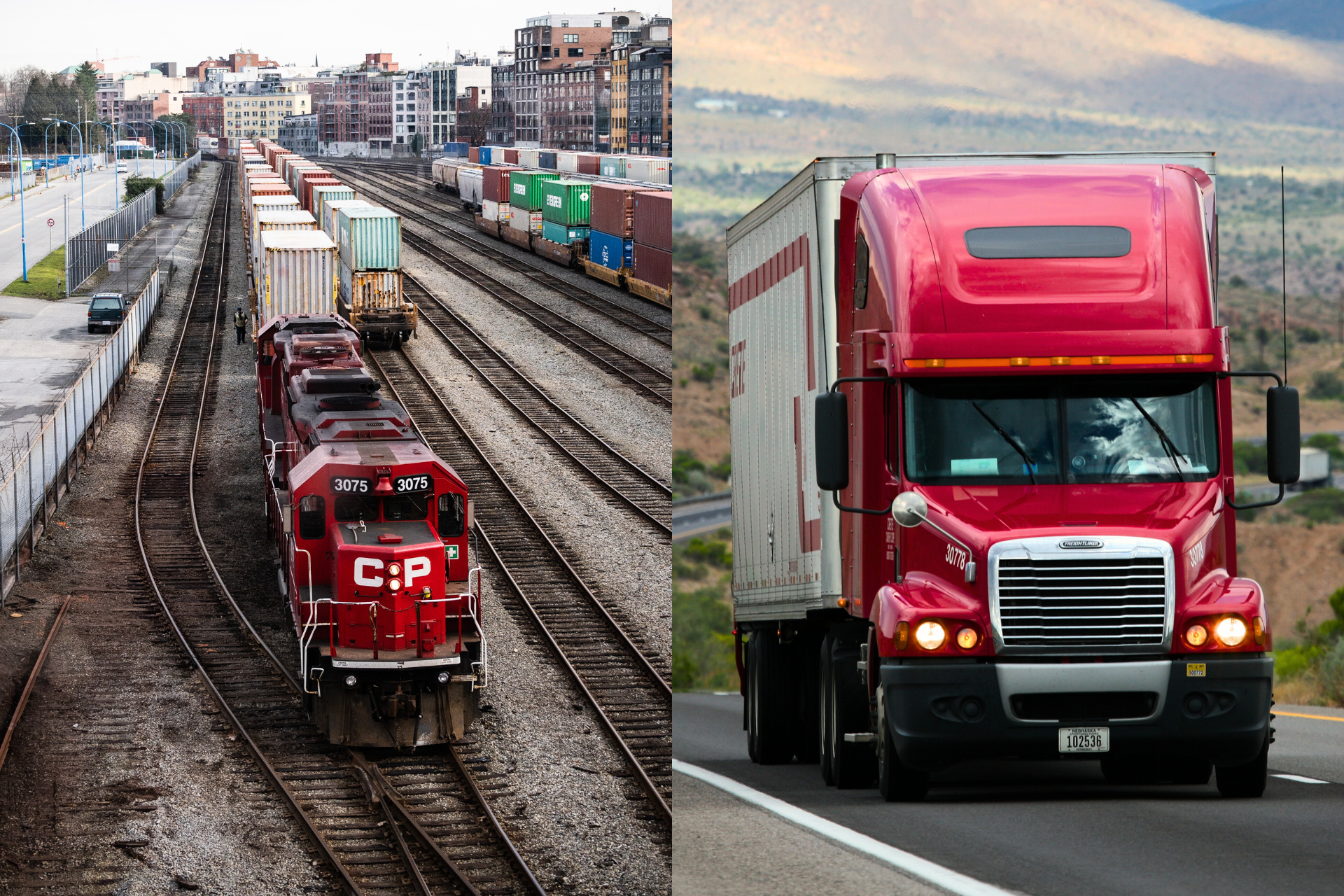
The logistics sector, a cornerstone of global commerce, is under mounting pressure to reduce carbon footprints while maintaining efficiency and cost-effectiveness. Traditionally, road transport has dominated freight logistics due to its flexibility and accessibility, however, as sustainability moves higher on corporate agendas, rail freight is emerging as a compelling alternative. The question is no longer just about cost and speed, but whether sustainable logistics (led by a shift towards rail) can reshape supply chains for the better. The Case for Rail Freight: Sustainability, Efficiency, and Capacity Rail freight offers a number of advantages over road transport, particularly in terms of sustainability. Rail is widely recognised as one of the most environmentally friendly modes of freight transport, emitting significantly less CO₂ per ton-kilometre than road haulage. According to the European Environment Agency (EEA), rail transport produces up to nine times fewer emissions per kilometre than trucks, making it a critical component in the transition to greener supply chains. Beyond its environmental credentials, rail freight also benefits from greater energy efficiency and capacity . A single freight train can carry the equivalent of up to 76 truckloads , reducing congestion on highways and lowering overall fuel consumption. This efficiency is particularly advantageous for businesses transporting bulk goods, such as raw materials, chemicals, and consumer products over long distances. As fuel costs fluctuate and governments impose stricter emissions regulations, rail’s efficiency could provide businesses with long-term cost stability. Road Transport: Flexibility and Last-Mile Connectivity Despite its sustainability benefits, rail freight is not without limitations. Road transport remains indispensable for its flexibility, speed, and ability to provide door-to-door service. Unlike rail, which is constrained by fixed infrastructure and schedules, trucks can deliver goods directly to warehouses, retailers, and consumers, offering an advantage in short-haul and time-sensitive deliveries. Moreover, road transport is often the preferred option for industries requiring just-in-time (JIT) delivery models , such as e-commerce and perishable goods suppliers. The ability to dispatch goods at short notice, adjust routes based on real-time conditions, and access locations without railway connections makes road transport an essential part of the logistics ecosystem. Can Rail and Road Work Together? The Case for Intermodal Logistics Rather than viewing rail and road transport as competing forces, many businesses are exploring intermodal logistics, where both modes work in synergy to optimise efficiency and sustainability. Intermodal transport systems use rail for the long-haul portion of a journey and road transport for first-mile and last-mile delivery, balancing sustainability with flexibility. For example, freight terminals and logistics hubs are being strategically developed to facilitate seamless transitions between rail and road. Investments in containerised freight technology, digital tracking systems, and synchronised scheduling are making intermodal transport increasingly viable for businesses seeking a more sustainable supply chain model. Policy, Infrastructure, and the Future of Rail Freight For rail freight to truly challenge road transport on a larger scale, continued investment in infrastructure, policy incentives, and technology is essential. Governments and industry bodies worldwide are recognising the need for modernised rail networks, electrified freight corridors, and enhanced intermodal facilities. In the European Union, initiatives such as the Trans-European Transport Network (TEN-T) and the European Green Deal aim to increase rail freight’s market share, while in the United States, the Bipartisan Infrastructure Law has allocated funding to enhance rail connectivity. In Asia, China’s Belt and Road Initiative is further expanding rail freight capacity, linking markets across continents. Advancements in automation, AI-driven logistics planning, and digital rail infrastructure will also play a crucial role in making rail freight more competitive. Smart freight routing, predictive maintenance for rail networks, and real-time tracking systems are helping businesses increase reliability and efficiency , making rail an increasingly attractive option. A Balanced Approach to Sustainable Logistics The shift towards rail freight presents businesses with a tangible opportunity to reduce carbon emissions, enhance efficiency, and build more resilient supply chains. However, road transport will continue to play a critical role in offering the flexibility needed for modern logistics operations. The future lies not in choosing one over the other, but in integrating both into a well-balanced, intermodal system that maximises sustainability without compromising efficiency. As businesses navigate a landscape shaped by environmental concerns and evolving logistics demands, those that embrace rail freight as part of their supply chain strategy will be better positioned to meet sustainability targets, mitigate fuel cost volatility, and future-proof their operations. Are You Ready to Optimise Your Logistics Strategy? Deploy specialises in providing skilled professionals and strategic workforce solutions for the rail and infrastructure sectors. Whether you're expanding your rail freight operations or seeking expertise in sustainable logistics, our recruitment specialists can connect you with the right talent. Get in touch with us today to explore how we can support your business.
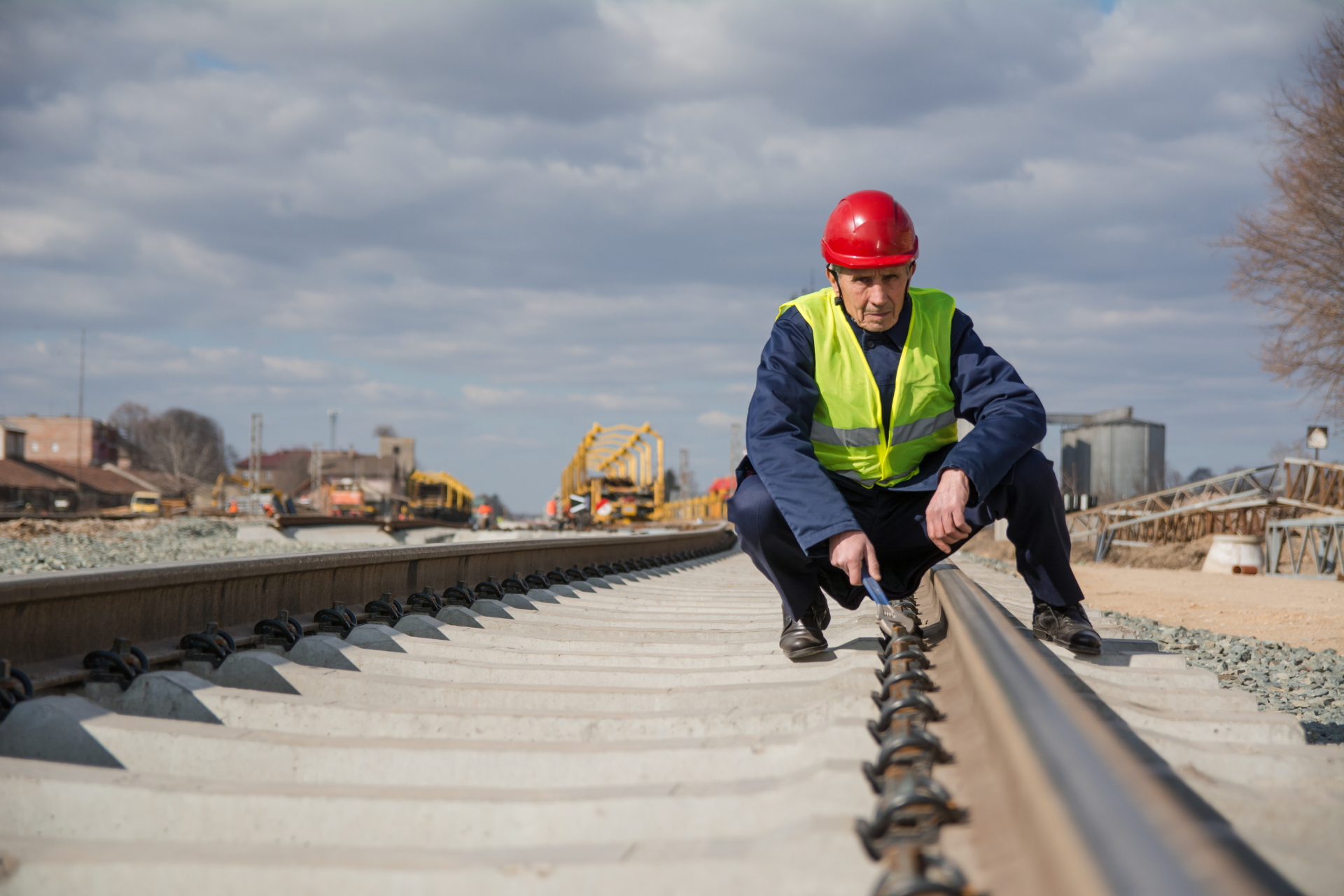
As cities expand and global populations grow, the demand for efficient, sustainable, and high-capacity transportation has never been more critical. Rail mega-projects (multi-billion-dollar infrastructure investments that reshape the way people and goods move) are at the forefront of this transformation, promising to enhance connectivity, reduce congestion, and support environmental goals. These projects, spanning continents and technological frontiers, are not only engineering marvels but also significant economic and environmental undertakings, requiring careful planning, investment, and execution. Economic Impact Rail mega-projects represent an investment in the future, facilitating economic growth by creating jobs, boosting trade, and increasing mobility. By improving transport links between major cities and industrial hubs, these projects can unlock economic potential and drive regional development. For example, China's Belt and Road Initiative includes vast high-speed rail networks that enhance trade efficiency and stimulate local economies along their routes, demonstrating how strategic investments in rail can catalyse growth on a global scale. In Europe, the High-Speed 2 (HS2) project in the United Kingdom exemplifies the economic power of rail infrastructure. Designed to connect London, Birmingham, and Manchester with ultra-fast rail services, HS2 is expected to create thousands of jobs, reduce travel times, and alleviate congestion on existing rail networks. By offering faster and more reliable transport options, such projects contribute to increased business productivity and economic decentralisation, spreading prosperity beyond major urban centres. Moreover, in developing economies, rail mega-projects can be transformative by providing efficient and affordable transport options, fostering trade, and linking previously isolated communities to economic opportunities. The Lagos-Calabar Railway in Nigeria, for instance, is set to revolutionise transport across the West African nation, improving supply chain logistics and passenger mobility while promoting regional integration. Environmental Considerations As concerns about climate change and carbon emissions continue to mount, rail mega-projects play a crucial role in advancing sustainable transport solutions. Rail is widely regarded as one of the most energy-efficient modes of transportation, producing significantly lower greenhouse gas emissions per passenger or tonne of freight compared to road or air travel. Consequently, investment in rail infrastructure aligns with global sustainability targets and national carbon reduction commitments. A prime example of environmentally conscious rail investment is the California High-Speed Rail (CHSR) project. Designed to connect major urban centres with fully electrified trains running on renewable energy, CHSR aims to provide a greener alternative to car and air travel, potentially reducing annual carbon emissions by millions of tonnes. Similarly, European projects such as Rail Baltica (an electrified high-speed rail corridor connecting the Baltic states) are being developed with a focus on sustainability, integrating renewable energy sources and reducing reliance on fossil fuels. In addition to direct emissions reductions, rail mega-projects contribute to urban sustainability by reducing congestion and promoting compact, transit-oriented development. By providing a viable alternative to private car usage, they can alleviate pressure on road networks, lower urban pollution levels, and encourage more sustainable land use planning. Challenges and Future Outlook Despite their numerous benefits, rail mega-projects are not without challenges. The scale and complexity of these investments often lead to budget overruns, delays, and political disputes. Infrastructure projects like HS2 and CHSR have faced criticism over rising costs and prolonged timelines, highlighting the difficulties in balancing ambition with financial and logistical feasibility. Furthermore, successful implementation requires meticulous planning, stakeholder collaboration, and technological adaptation. Innovations such as digital twin technology, where virtual models are used to simulate and optimise construction processes, are being increasingly utilised to improve efficiency and mitigate risks in large-scale rail developments. Looking ahead, the future of rail mega-projects is likely to be shaped by advances in high-speed technology, automation, and sustainable energy integration. Projects such as Japan’s maglev Shinkansen, which utilises cutting-edge magnetic levitation technology to achieve speeds of over 600 km/h, demonstrate the potential for revolutionary advancements in rail transport. Rail mega-projects are reshaping the global transportation landscape, offering significant economic, environmental, and social benefits. While they present undeniable challenges, their long-term potential to drive sustainable development and economic prosperity makes them a critical component of future infrastructure investment. As technology continues to evolve and sustainability remains a priority, these ambitious projects will play a pivotal role in defining the next era of global mobility.

Underground rail systems have long been at the heart of modern urban transportation, enabling millions of people to move efficiently beneath the surface of the world’s busiest cities. While passengers may take for granted the convenience of a swift and reliable metro service, the reality is that these subterranean networks represent some of the most remarkable engineering achievements in modern history. Constructing and maintaining underground railways is no simple task, as engineers must overcome a host of formidable challenges, from geological uncertainties and space constraints to environmental concerns and the need for uninterrupted service in densely populated areas. Overcoming Geological Challenges One of the most significant hurdles in underground railway construction is the unpredictable nature of the earth itself. Unlike surface-level infrastructure projects, where conditions are more easily surveyed and controlled, tunnelling deep beneath cities requires extensive geotechnical analysis to assess soil composition, rock stability, and the presence of groundwater. Engineers must carefully choose between different excavation techniques, such as tunnel boring machines (TBMs) or the cut-and-cover method, based on the local geology, balancing efficiency, cost, and structural integrity. In cities with loose or waterlogged soils, projects often require advanced ground-freezing techniques or pressurised excavation chambers to prevent tunnel collapses and ensure worker safety. Innovative Construction Methods in Constrained Spaces Building an underground rail system in a densely populated urban environment presents a further challenge, as construction must be carried out with minimal disruption to daily life. Unlike overground projects, where large open spaces facilitate equipment movement and material storage, subterranean construction demands precise logistics and carefully staged operations. Engineers often employ tunnel boring machines, which dig through rock and soil while simultaneously installing concrete tunnel linings, allowing for continuous progress with minimal surface-level disturbances. In cases where existing infrastructure, such as roads, buildings, or historic landmarks, stands in the way, engineers must carefully navigate around them, reinforcing surrounding structures to prevent subsidence or damage. Addressing Environmental and Sustainability Concerns As cities grow increasingly conscious of their environmental impact, underground rail projects are adopting more sustainable construction practices. Engineers now integrate energy-efficient ventilation and lighting systems, deploy materials with lower carbon footprints, and incorporate regenerative braking technology in trains to conserve power. Additionally, the management of excavated soil and rock has become a focal point, with many projects repurposing materials for other construction initiatives rather than sending them to landfills. Moreover, underground railways themselves contribute to sustainability by reducing road congestion and lowering carbon emissions, thereby promoting greener and more efficient urban mobility. Ensuring Long-Term Safety and Maintenance Once operational, underground rail systems require meticulous maintenance to ensure safety and efficiency. Unlike surface railways, where issues can be more readily identified and addressed, underground systems demand sophisticated monitoring technologies to detect wear and potential faults before they become critical. Engineers employ real-time sensors and digital twin simulations (virtual models that replicate physical infrastructure) to predict maintenance needs and optimise asset management. Ventilation, fire suppression, and emergency evacuation systems must also be continuously tested and upgraded to ensure passenger safety in the event of unforeseen incidents. Pushing the Boundaries of Engineering Innovation From the intricate tunnel networks of London and New York to the rapidly expanding metro systems in cities like Singapore and Shanghai, underground railways are a testament to human ingenuity and engineering expertise. As technology advances, we are witnessing new frontiers in tunnelling, including the development of hyperloop-inspired vacuum tunnels and fully automated metro systems that promise faster, safer, and more efficient transport. With continued investment and innovation, underground rail systems will remain essential to the future of sustainable urban mobility, offering a blueprint for how cities can efficiently navigate their growing transportation needs while minimising environmental impact. The construction and maintenance of underground rail systems represent some of the most complex and technically demanding engineering feats in the world. By overcoming geological uncertainties, navigating urban constraints, and embracing cutting-edge technologies, engineers continue to push the boundaries of what is possible in underground transport. As cities expand and the demand for efficient public transit grows, the lessons learned from these hidden engineering marvels will shape the future of underground rail, ensuring that these vital networks remain safe, sustainable, and seamlessly integrated into the urban landscape.
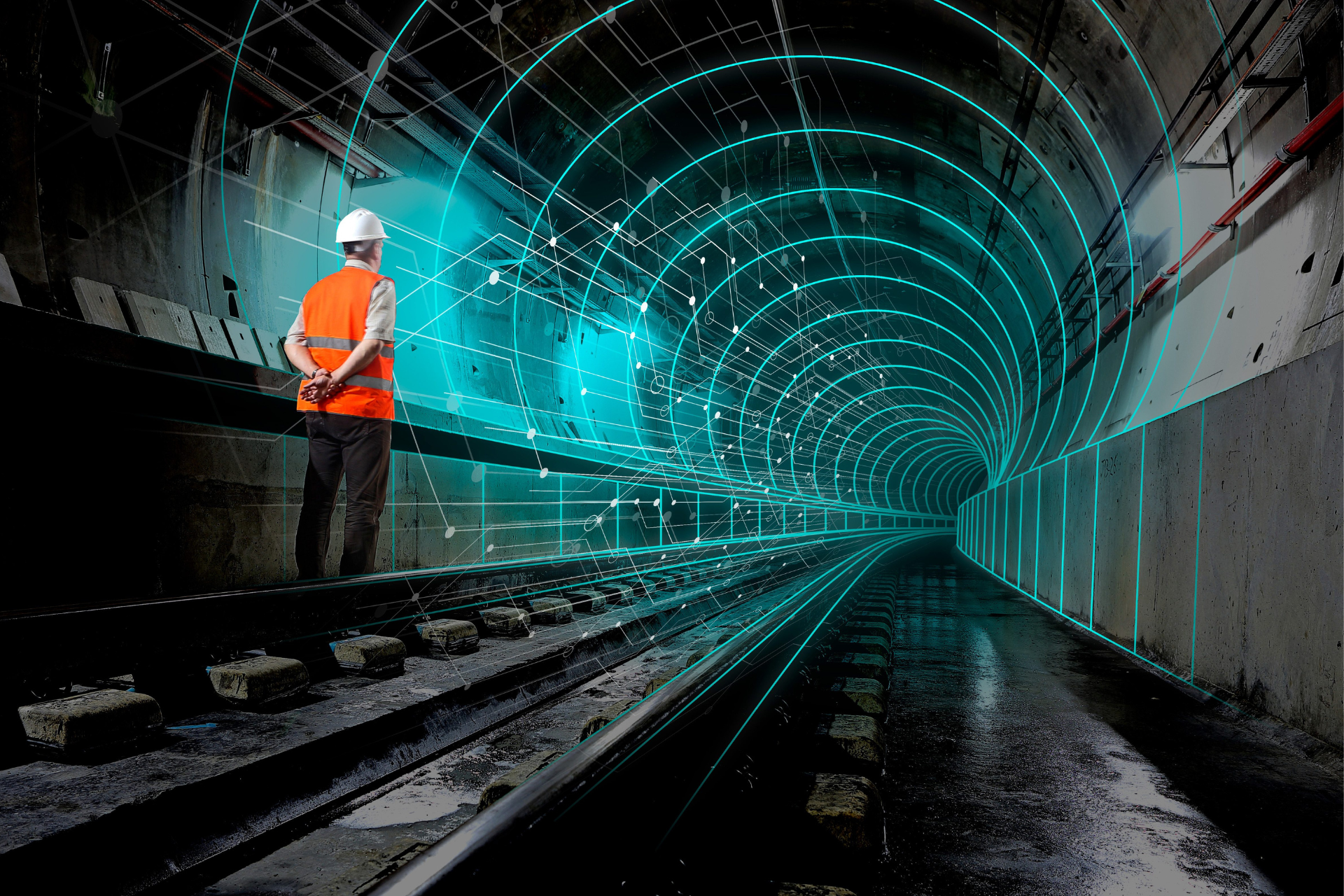
In the ever-evolving world of rail infrastructure, efficiency, safety, and sustainability remain at the forefront of industry priorities. Digital twin technology is emerging as a transformative force, enabling real-time monitoring, predictive maintenance, and smarter infrastructure planning. By creating virtual replicas of physical rail assets, digital twins offer a dynamic, data-driven approach to managing railway networks, reducing downtime, and improving long-term performance. What Are Digital Twins? Digital twins are highly detailed virtual models that mirror the physical state of railway infrastructure, from tracks and stations to signalling systems and rolling stock. These models are continuously updated using real-time data from sensors, IoT devices, and AI-driven analytics, allowing railway operators to visualise, analyse, and optimise their networks like never before. The adoption of digital twins is revolutionising rail infrastructure management by bridging the physical and digital worlds. With the ability to simulate different scenarios, track asset performance, and predict future challenges, rail operators can make data-driven decisions that enhance safety, efficiency, and cost-effectiveness. Real-Time Monitoring and Predictive Maintenance One of the most significant advantages of digital twin technology is its ability to provide real-time monitoring of rail assets. Sensors embedded throughout railway networks collect data on track conditions, train movements, and environmental factors. This information is fed into the digital twin, allowing operators to detect anomalies, identify early signs of wear and tear, and proactively schedule maintenance. Benefits of predictive maintenance: Reduced Downtime: Predicting faults before they occur minimises disruptions to services. Cost Savings: Preventative maintenance lowers repair costs and extends the lifespan of rail assets. Enhanced Safety: Identifying risks early ensures safer conditions for passengers and workers. For example, Network Rail in the UK has leveraged digital twin technology to monitor track geometry and prevent failures. Similarly, Deutsche Bahn in Germany has implemented digital twins to predict infrastructure degradation and optimise maintenance schedules, reducing costly and unexpected disruptions. Optimising Infrastructure Planning and Design Digital twins are also transforming how new rail projects are planned and executed. Engineers and planners can simulate various design options, test infrastructure resilience, and assess the impact of potential challenges before breaking ground. Key advantages in planning include: Virtual Testing: Engineers can model and refine track layouts, station designs, and signaling systems. Sustainability Assessments: Digital twins enable energy efficiency simulations, reducing the environmental impact of new projects. Improved Project Coordination: Stakeholders can collaborate more effectively by working within a shared virtual environment. For instance, the Grand Paris Express project in France, one of Europe’s largest transport infrastructure developments, is utilising digital twins to optimise station construction and reduce construction waste. The Role of AI and IoT in Digital Twin Technology The effectiveness of digital twins relies heavily on the integration of Artificial Intelligence (AI) and the Internet of Things (IoT). AI-driven analytics help predict asset failures, while IoT sensors provide a contemporaneous stream of data from rail infrastructure. Together, these technologies enable digital twins to evolve over time, improving their accuracy and predictive capabilities. How AI and IoT enhance digital twins: Machine Learning Algorithms: These analyse vast datasets to uncover patterns in asset performance. Autonomous Decision-Making: AI can suggest maintenance actions without human intervention. Real-Time Updates: IoT ensures digital twins reflect the latest conditions on the ground. The Future of Digital Twins in Rail As rail networks become increasingly complex and interconnected, the role of digital twins will only grow. The technology is expected to integrate with other smart infrastructure innovations, such as 5G connectivity, autonomous train systems, and climate resilience modeling. Governments and private operators worldwide are investing heavily in digital twin initiatives to modernise rail infrastructure. Looking ahead, we can anticipate greater adoption of these technologies, further improving railway efficiency, safety, and sustainability. At Deploy, we understand that cutting-edge technologies like digital twins require highly skilled professionals to implement and manage them effectively. We specialise in sourcing top-tier talent for the rail and infrastructure sectors, ensuring that organisations have the expertise needed to drive innovation and efficiency. Are you looking for expert talent to help integrate digital twin technology into your rail projects? Contact Deploy today and let’s build the future of rail together.

As the world moves toward more efficient and sustainable transport solutions, two technologies stand out in the race for the future of high-speed travel: high-speed rail (HSR) and the Hyperloop. High-speed rail has already revolutionised transportation in countries like Japan, France, and China, offering a reliable and relatively green alternative to air and road travel. Meanwhile, the Hyperloop, a futuristic concept championed by Elon Musk and various startups, promises near-supersonic speeds through low-pressure vacuum tubes. Both systems claim to be fast, sustainable, and game-changing for global mobility, but how do they really compare? And, which is more likely to become the dominant force in high-speed transport? High-Speed Rail (HSR) u ses conventional steel-wheel-on-rail technology with advanced aerodynamics and tilting mechanisms for stability at high speeds, and is able to operates at speeds of 250-350 km/h (155-217 mph), with some reaching 400 km/h (249 mph). It runs on electric power, making it a cleaner alternative to air travel, especially when powered by renewable energy sources, and requires dedicated tracks and extensive infrastructure, including bridges, tunnels, and stations. Whereas Hyperloop is a proposed system where pods travel inside low-pressure vacuum tubes, drastically reducing air resistance and friction, which makes them theoretically capable of reaching speeds of over 1,200 km/h (745 mph). It use magnetic levitation (maglev) or air-bearing technology to minimise ground contact and drag, and is designed to be fully electric, with potential for renewable energy integration (solar panels on tube structures).
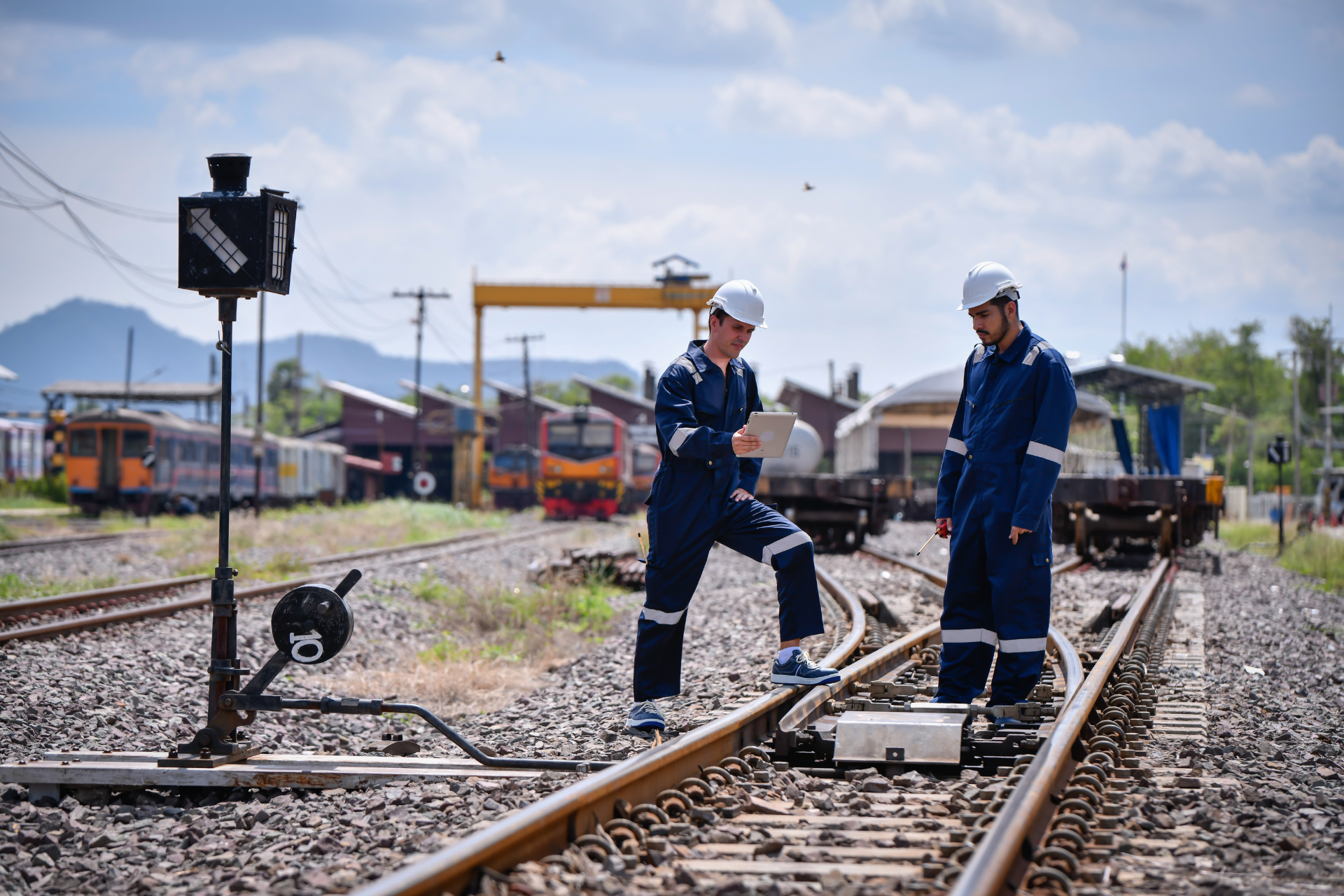
The infrastructure sector plays a vital role in shaping the world we live in, from building resilient transport networks to advancing urban development. While cutting-edge technology and innovative design are celebrated as drivers of progress, an often-overlooked factor is equally critical: the well-being of the workforce. Ensuring the health, safety, and mental well-being of workers is not only a moral imperative but also a practical necessity for the success and sustainability of infrastructure projects. The Well-Being Imperative The infrastructure workforce operates in some of the most challenging environments. Construction sites, rail networks, and other infrastructure projects often involve physically demanding tasks, high-pressure timelines, and exposure to potentially hazardous conditions. These stressors make it essential to prioritise workforce well-being at every level. Data from the World Health Organization (WHO) and the International Labour Organization (ILO) underscores the impact of workplace conditions on mental and physical health. A report revealed that unhealthy working environments contribute to over 3 million deaths annually worldwide (source: https://www.ilo.org/resource/news/nearly-3-million-people-die-work-related-accidents-and-diseases ), highlighting the need for proactive measures to protect and support workers. In the infrastructure sector, well-being directly influences productivity, safety, and project outcomes. Workers who feel valued, supported, and safe are more likely to perform at their best, reducing accidents and increasing efficiency. Health and Safety: Foundational Practices Health and safety protocols form the cornerstone of workforce well-being in infrastructure. These protocols are designed not only to meet regulatory requirements but also to create a culture where safety is prioritised at every stage of a project. Key Components of Effective Health and Safety Practices: Comprehensive Training Training programs tailored to specific roles and environments equip workers with the knowledge and skills needed to perform tasks safely. Topics range from hazard recognition to emergency response, ensuring workers are prepared for any eventuality. Regular Inspections and Maintenance Ensuring that equipment, tools, and worksites meet safety standards is critical. Regular inspections help identify and address potential risks before they escalate. Real-Time Monitoring Advances in wearable technology and IoT devices are transforming safety in infrastructure. Real-time monitoring of worker health metrics, environmental conditions, and equipment performance allows for immediate intervention when issues arise. Mental Well-Being: The Next Frontier While physical safety has long been a focus in infrastructure, mental well-being is increasingly recognised as an equally important factor. The demanding nature of infrastructure work can lead to stress, burnout, and other mental health challenges. Addressing these issues is essential for fostering a resilient and engaged workforce . Effective Approaches to Supporting Mental Health: Open Communication Creating an environment where workers feel comfortable discussing mental health concerns is crucial. Regular check-ins, anonymous feedback systems, and access to mental health resources can encourage openness. Access to Professional Support Providing access to trained counselors and mental health professionals ensures workers receive the support they need. Many organisations are now integrating Employee Assistance Programs (EAPs) into their workforce well-being strategies. Work-Life Balance Flexible scheduling and policies that promote work-life balance can help alleviate stress and improve overall satisfaction among workers. Best Practices: Real-World Examples Several organisations are setting benchmarks for workforce well-being in the infrastructure sector. Network Rail (UK): Mental Health Awareness Network Rail has implemented a comprehensive mental health program that includes training for managers, peer support initiatives, and 24/7 access to counseling services. These efforts have significantly reduced absenteeism and improved employee engagement. Turner Construction (US): Safety Week Turner Construction organises an annual "Safety Week" to reinforce its commitment to worker safety. The event includes workshops, demonstrations, and discussions aimed at fostering a safety-first culture. Crossrail (UK): Health and Well-Being Hub During the Crossrail project, a dedicated health and well-being hub provided workers with access to fitness facilities, mental health resources, and nutritional advice. This holistic approach contributed to a lower accident rate and higher morale. Conclusion: A Shared Responsibility Workforce well-being is not just a responsibility of employers; it requires collaboration across industry stakeholders, including policymakers, unions, and workers themselves. By prioritising health, safety, and mental well-being, the infrastructure sector can create environments where workers thrive, projects succeed, and communities benefit. At Deploy, we recognise that the human element is central to the success of infrastructure projects. By connecting organisations with skilled professionals and promoting best practices in workforce well-being, we are committed to shaping a safer, healthier, and more sustainable industry. Contact Deploy today to learn more about our commitment to workforce excellence. Together, we can build a future where infrastructure projects are not only innovative but also deeply human at their core.

As climate change continues to escalate, the rail and infrastructure sectors are under increasing pressure to adapt to more frequent and severe weather events. From record-breaking heatwaves to unprecedented flooding, these challenges demand innovative design strategies, enhanced workforce readiness, and a deeper commitment to sustainability. Deploy, as a leader in recruitment for rail and infrastructure, recognises the critical importance of building resilience to safeguard the future. Building for Tomorrow’s Challenges Modern infrastructure projects are no longer just about meeting today’s demands—they must anticipate and endure the environmental stresses of the future. Advanced design innovations are at the heart of this effort. One example is the use of green infrastructure solutions such as permeable pavements and engineered landscapes that manage stormwater effectively, reducing flood risks during heavy rainfall. These measures are not only practical but also align with broader sustainability goals by mitigating urban heat islands and supporting biodiversity. In rail, incorporating climate models into design and maintenance strategies is becoming standard practice. Projects are now engineered to handle future scenarios, such as track systems capable of withstanding higher temperatures or bridges designed to endure storm surges. These forward-thinking approaches are essential for ensuring reliability and safety in the face of unpredictable weather. The Role of a Climate-Ready Workforce While innovative designs are critical, the backbone of resilient infrastructure lies in its workforce. Skilled professionals trained to implement, maintain, and adapt these systems are indispensable. Initiatives like the Climate-Resilient Employees for a Sustainable Tomorrow (CREST) program highlight the importance of equipping workers with the tools and knowledge they need to navigate these challenges. From climate literacy to hands-on training in green technologies, such programs are creating a new generation of infrastructure specialists who are prepared to meet the demands of a changing world. Sustainability, The Foundation of Resilience Sustainability and resilience go hand in hand. The Federal Railroad Administration’s Climate and Sustainability Program is one example of how government and industry are collaborating to enhance rail infrastructure. The program emphasises improving air quality, reducing greenhouse gas emissions, and promoting resilience within the rail network. Sustainability in infrastructure development also means considering long-term impacts. It involves striking a balance between economic feasibility, environmental stewardship, and social equity—all while ensuring systems can recover quickly from external shocks. This integrated approach is key to building infrastructure that not only survives but thrives under the pressures of climate change. A Resilient Path Forward As we face the growing realities of extreme weather, the need for resilient infrastructure has never been more urgent. Through cutting-edge design, a climate-ready workforce, and sustainable practices, the rail and infrastructure sectors are paving the way for a future where innovation meets reliability. At Deploy, we believe in shaping this future together. By connecting organisations with the expertise they need, we are proud to contribute to building a world where infrastructure can stand strong against the tests of time and nature. If you’re an organisation preparing to innovate or a professional eager to make a difference, contact Deploy today to explore how we can support your journey toward resilience and sustainability.




